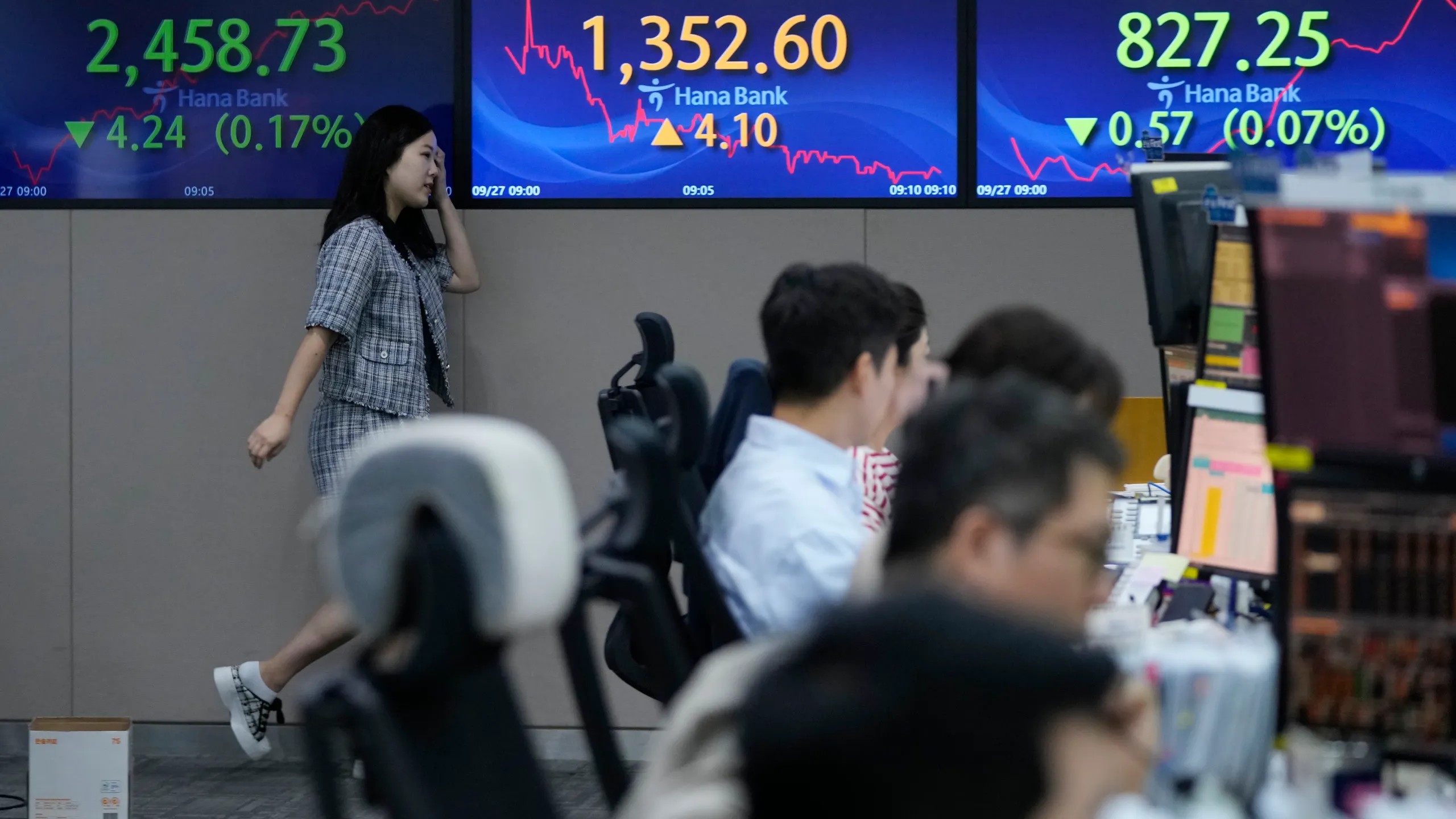HONG KONG — Asian markets spiraled downward on Tuesday, as investors reacted to deepening concerns over a potential economic downturn in the United States. The financial landscape was thrown into turmoil after US President Donald Trump refrained from dismissing the possibility of a recession, sending ripples of anxiety through global markets. This latest development, coupled with the administration’s ongoing trade disputes with key economic partners, has intensified fears that the world’s largest economy may be on the brink of a significant slowdown.
Panic-selling ensued across the region, with the MSCI Asia-Pacific index excluding Japan plunging more than 1%. Japan’s Nikkei 225 tumbled nearly 3% in morning trading before recovering some ground later in the session. South Korea’s KOSPI index slumped as much as 2.5%, while Taiwan’s TAIEX experienced an even sharper decline, nearing a 3% loss. In Australia, the S&P/ASX 200 dropped as much as 1.7%, reflecting the unease sweeping through financial markets. Hong Kong’s Hang Seng Index also saw a downturn, though its decline remained under 1%.
Technology stocks bore the brunt of the sell-off, with major industry players seeing their valuations eroded amid worsening economic uncertainty. Japanese electronics giants Sony and Hitachi each saw losses exceeding 4.5%, while telecommunications and investment firm SoftBank shed as much as 4.4%. Taiwan Semiconductor Manufacturing Company (TSMC), the world’s largest contract chipmaker and a critical supplier for Apple, slumped more than 3%, while Foxconn suffered a similar fate. South Korea’s Samsung Electronics, a dominant force in the semiconductor sector, experienced a decline of over 2%, as worries over weakening global demand continued to weigh on the industry.
The decline in stock prices reflects growing unease over the US administration’s trade policies, which have disrupted global commerce and heightened economic instability. Since the start of Trump’s second term, trade relations have soured considerably, with the president aggressively pursuing protectionist measures. Tariffs on imports from Canada, Mexico, and China have rattled international markets, raising concerns over the potential for protracted trade conflicts.
Trump’s latest threats have done little to calm investor nerves. The White House recently announced plans for a sweeping 25% tariff on all imports from Mexico and a majority of goods from Canada, though its implementation has been deferred until early next month. Meanwhile, a dramatic escalation in the trade war with China has further unsettled markets. The US government last week doubled tariffs on all Chinese imports to 20%, prompting Beijing to retaliate with tariffs targeting American agricultural exports. These countermeasures took effect on Monday, adding to concerns that a resolution to the dispute remains elusive.
The economic outlook became even more uncertain following Trump’s vague comments about the possibility of a US recession. When pressed for an answer during his appearance on Sunday Morning Futures With Maria Bartiromo on Fox News, he evaded the question, offering only that the country was undergoing a “period of transition.” The statement did little to reassure already-nervous investors, amplifying concerns that an economic contraction may be looming.
Wall Street’s reaction was immediate. On Monday, the Nasdaq Composite suffered its most significant single-day drop since September 2022, tumbling 4% as technology stocks reeled. The Dow Jones Industrial Average plunged 890 points, down 2.08%, while the S&P 500 fell 2.7%. The sell-off erased all the gains that the three major US indices had accumulated since Trump’s re-election.
Investor fears were compounded by Delta Air Lines’ decision to slash its earnings forecast, citing a decline in consumer and corporate confidence. The airline’s warning signaled broader economic concerns, reinforcing speculation that the economy could be heading for a downturn.
With recession fears escalating and trade tensions showing no sign of abating, investors remain on high alert, watching for any signs of stability in the turbulent financial landscape.









